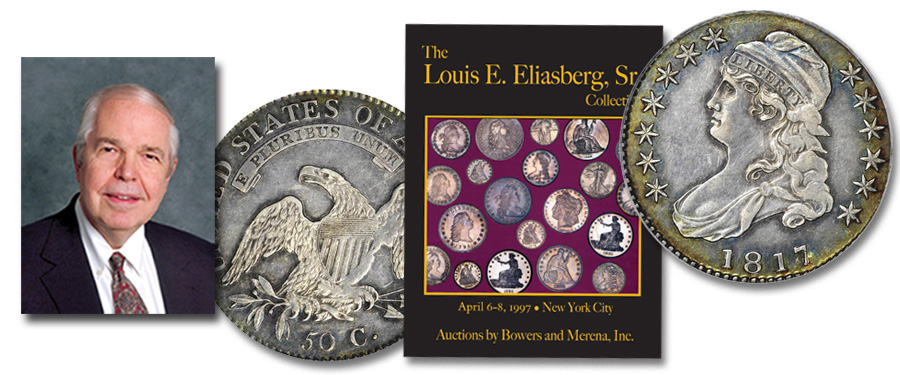
There are many coins that are presently thought to be unique in
numismatic hands (just one known to exist) or that were thought to be unique in
the past. The 1817/4 Overdate
half dollar is one such example.
In The Numismatist, October 1930, editor Frank G.
Duffield had this comment: “E.T. Wallis, of Los Angeles, Cal., writes that he
has recently discovered a heretofore unknown variety of the 1817 half dollar,
the last figure of the date being cut over a 4. A number of half dollars of 1817 over
1813 are known, but this is the first one over 1814 reported, Mr. Wallis says… Howard
R. Newcomb, of Los Angeles, and M.L. Beistle, of Shippensburg, Pa., both
authorities on the half-dollar series, have examined the coin and pronounced it
a hitherto unknown variety.”
This was an exciting find indeed! For a long time, many numismatists had
specialized in early half dollars, and two important studies of die varieties
had been written: J.W. Haseltine’s Type Table in 1881 and M.L.
Beistle’s A Register of Half Dollar Die Varieties in 1929. Neither of these observers had known of
such a variety.
Accordingly, in 1930, it would have been correct to have said,
“Only one such coin is known to exist.”
In 1934, Wallis advertised it for sale in an obscure publication
(scarcely remembered today), the first edition of the National Catalog
of U.S. Coins, page 164,
pricing it at $2,500. The piece
eventually landed in the Louis E. Eliasberg. Sr. Collection.
In time, knowledge of this remarkable rarity spread, collectors
studied “ordinary” 1817 half dollars in their collections, and several more
1817/4 half dollars were recognized. When
I cataloged the Eliasberg Collection in 1997, I knew of the following examples: the Wallis/Eliasberg Specimen at EF-45;
the Witham Specimen, F-15; the Meyer Specimen, VF-25 or finer; the Overton
Specimen, G-6, repaired; the Farley Specimen, VF-20; the Burke Specimen, VF(?);
and the Dosier Specimen, F-12. At
that time, it would have been correct to say, “Only seven such coins are
known to exist.”
Today, the 2021 Guide Book informs us that eight
exist. Whether there are still some
in hiding or unidentified, remains to be seen. For the 1817/4, the best we can do is give
an estimate based on knowledge of the known pieces. In my opinion, it is likely that most have
come to light by now, but I would not be shocked if in the next decade or two
another appeared out of the blue.





